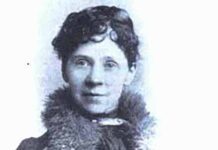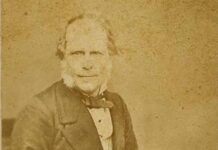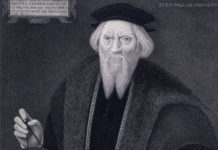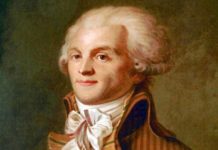Sofonisba Anguissola (1535 – 1625) was one of few female Italian Renaissance artists. As a famous portraitist, she was at home in the courts of Europe.
Leonardo Da Vinci, Michelangelo and many others of the period were artists, writers, travelers, scientists and businessmen. Their interests were wide and varied. They were what is called today “Renaissance men”.
And Renaissance women? Very few of them existed . Women in the Renaissance had little education and thus little political or economic power. Isabella d’Este was one exception and, to a lesser extent, so was Sofonisba Anguissola.
Sofonisba’s Early Life and Training
Born in Cremona, Italy in 1535 to a noble, though cash-strapped family , Sofonisba was the first of seven girls and one boy. Her father, Amilcare, through his political connections to the ruling Spanish aristocracy in Cremona , was in charge of choosing the artists to decorate the Church of San Sigismond.
At an early age, Sofonisba accompanied her father to his appointments and decided she wanted to be an artist. Her father noted her talent and apprenticed her and her sister to a local painter, Bernardo Campi. The two girls, both gifted and determined, spent their youth in his atelier. Sofonisba soon concentrated on portraits, depicting her friends and family. She often donated these portraits to the subjects, thus building a solid reputation as an accomplished artist. Early on, she was recognized for her extraordinary expertise by Cremonese artists and writers. Her father then introduced her to the courts nearby … the Estes in Ferrara and the Gonzagas in Mantua. Here, she was commissioned to paint the duchess Margherita and her daughter-in-law , Elena of Austria.
Sofonisba’s Portraits
Sofonisba’s forte was her ability to reveal the personalities of her subjects. Their expressions are intelligent, lively, and their movements caught on canvas are graceful and regal. Sofonisba’s fascination with dress, particularly Venetian costumes, is clear in every portrait. Her rendering of velvet, silk and lace is flawless. The many jewels depicted, in gold, pearls and silver, have the shine of reality. One of the signs of an authentic Sofonisba portrait, including her several self portraits, is the rosy-cheeked healthy complexion given her subjects. Her painting of the infanta Micaela, daughter of Phillip II of Spain, is an excellent example.
Michelangelo, over eighty at the time, having received from Amilcare a small painting by Sofonisba, recommended this young painter to Cosimo di Medici. This connection led to Sofonisba being called to the court of Phillip II of Spain in 1559 as a lady-in-waiting to the new young queen, Isabella di Valois, Maria de Medici’s daughter. When Sofonisba’s beloved sister and fellow artist, Elena, joined a convent, Sofonisba accepted the position in Spain.
At the Court of Phillip II of Spain
The two girls, Isabella the queen and Sofonisba the artist, became fast friends. Indeed, when Isabella lost her first child in childbirth, Sofonisba never left her side. Isabella trusted Sofonisba and in her will later nominated her friend to be her two little girls’ head teacher, in effect their principal caretaker. When Isabella died after the still birth of her second boy, and Phillip fell into a deep depression, it was Sofonisba who cared for his children. Phillip soon remarried, and Sofonisba asked him to find her an Italian husband, which he did.
Twice Married
Fabrizio de Moncada , a Sicilian nobleman, and Sofonisba were married in Madrid in 1573. The couple left immediately for Palermo.Fabrizio drowned a few years later, and Sofonisba decided to leave Palermo for Cremona. During the trip, she met and fell in love with a young captain, Orazio Lomellini . They were married and lived for many years in Genoa, where Sofonisba continued her career as portraitist to the aristocracy. Rubens, having seen her paintings elsewhere, visited her there.
Though she never again was able to return to Cremona, she wrote many letters to her family, friends and fellow artists there and elsewhere, many of which are still extant and detail her adventurous life.
In 1615, Sofonisba and Orazio moved to Palermo, where Anthon Van Dyck, only 22 years old at the time, visited Sofonisba, by then at the end of her career. Van Dyck sketched her portrait on the spot, and she perhaps imparted a few lessons to him on technique. Sofonisba died a year later,at 96, and was buried in the Church of St. George in Palermo.
Her husband’s words on the plaque in the church were: “To my wife Sofonisba, of the noble house of Anguissola, placed among illustrious women of the world for her extraordinary beauty and natural talent, and so renowned at painting people’s portraits that no one in her time was her equal. Orazio Lomellini, suffering great pain, placed this last sign of honor, less than what was deserved for such a woman, but the most for common mortals.”
Sources:
- Review of La Signora della Pittura (Painting’s Gentlewoman) by Daniela Pizzagalli-Rizzoli
- Sofonisba. Una Vita per la Pittura e la Libertà (Sofonisba A Life of Painting and Freedom) by Millo Borghini, Spirali, Review by Antonella Lombardi – Website-telegiornaliste
- North Italian Painters of the Renaissance. Bernhard Berenson – G. P. Putnam’s Sons.,: New York. Publication Year: 1907. Page: 162.








